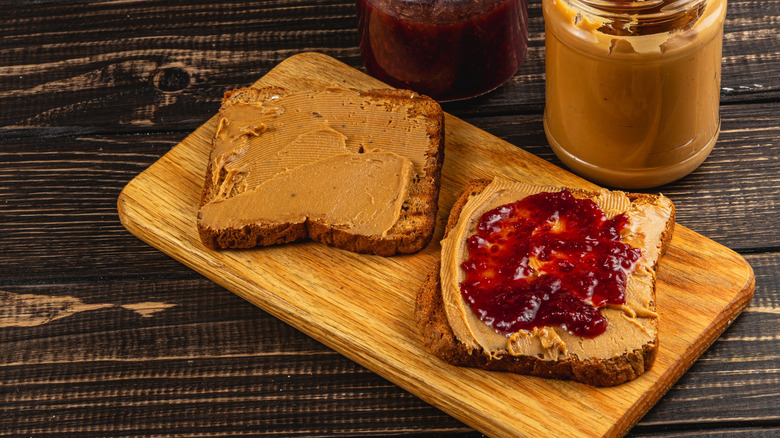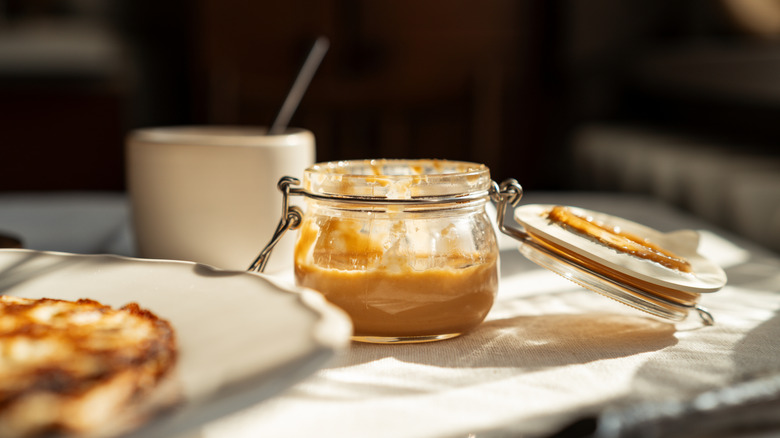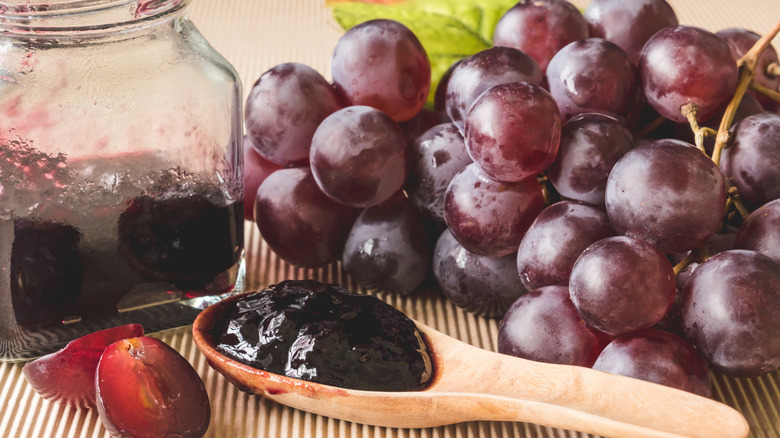Why Is The UK So Disgusted By PB&J Sandwiches?
Americans are intimately familiar with peanut butter and jelly sandwiches. Affectionately known as PB&J, these cheap and high-calorie sandwiches are a classic choice for a filling meal at all ages, though their cloying sweetness holds a particular appeal to children. For adults, they may evoke nostalgic thoughts of their own youth. But this American staple isn't so well received across the pond.
Not only are peanut butter and jelly sandwiches uncommon in the United Kingdom, but when Britons try one, they often find it strange, if not disgusting. While it's ultimately a matter of personal preference, PB&J isn't built into the fabric of British culinary history like it is in the United States, and this multigenerational lack of familiarity is a likely culprit for the disconnect.
Peanut butter has a complex and far-reaching history, possibly beginning with the Inca hundreds of years ago, or other indigenous populations even earlier than that. But when a closer predecessor to modern peanut butter emerged in the late 19th century, it became popular in America, where, unlike the U.K., farmers had grown peanuts for generations. Although, it's not just peanut butter that the U.K. historically avoids: To the British, "jelly" refers to a completely different food than the sugary fruit spread.
Peanut butter as an American tradition
Peanut butter's place in American cuisine has a lot to do with the climate. Peanuts require long periods of hot weather to grow successfully. These conditions are plentiful in the American South, where peanuts have been an essential crop for hundreds of years, but the United Kingdom's cooler climate prevented large-scale farming. This meant that peanuts, and relatively heavy peanut butter, had to be imported at higher costs.
Meanwhile, in the United States, peanut butter rapidly grew in popularity after its debut. 1901 saw the first mention of PB&J sandwiches in a Boston culinary magazine, and by the start of World War I, peanut butter and grape jelly were both included in U.S. military ration kits. Bread was introduced to these kits for World War II, when the PB&J as we know it exploded in popularity.
Peanut butter was also prized on the home front, especially after processing improvements in the 1920s gave it the smoother consistency and longer shelf life we know today. When the Great Depression and Dust Bowl devastated both the economy and agriculture, peanut butter remained affordable and available, and became a pantry staple. While peanut butter has recently become more common in the U.K., it has a lot of catching up to do with its place in American kitchens.
American vs British jelly
The British distaste for peanut butter and jelly isn't just about peanut butter. Jelly is also a contentious ingredient, thanks in part to apparent confusion about what jelly is. British people trying PB&J sandwiches on social media can sometimes be seen clumsily smearing purple gelatin on slices of bread. This is because British English uses the term "jelly" for what Americans would call Jell-O, which is far too thick and sturdy for a proper PB&J.
American-style jelly is also uncommon in the U.K., where consumers tend to prefer jam or marmalade instead, which is slightly bitter. Jam, marmalade, and jelly are all similar, with some important differences. Both jam and marmalade typically contain pieces of fruit, whereas jelly is fruit juice and sugar boiled until thick. Smooth jam, which is strained of any fruit pieces or other solids, is perhaps the closest common U.K. analogue to American-style jelly.
Jam and jelly can often be used interchangeably in recipes, including with PB&J sandwiches. But between the unfamiliar nomenclature leading more often to peanut butter & Jell-O sandwiches, and the long-running unpopularity of peanut butter, it's little wonder that this American tradition never quite caught on in the United Kingdom.


